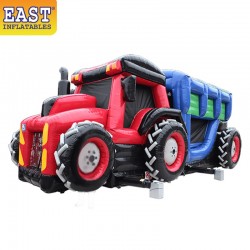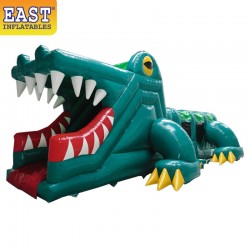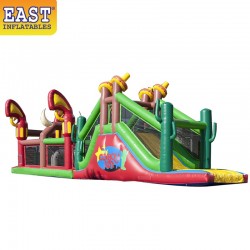
Inflatable obstacle training courses have gained immense popularity in recent years, offering a fun and challenging way for individuals to improve their fitness and agility. These courses are typically used in various events like obstacle races, fitness challenges, and team-building activities. In this article, we will explore the different components that make up an inflatable obstacle training course.
Inflatable Obstacles
The heart and soul of any inflatable obstacle training course are, of course, the inflatable obstacles themselves. These structures come in a wide range of shapes, sizes, and designs, providing participants with a variety of challenges. Some common inflatable obstacles include:
a. Climbing Walls: Inflatable walls of varying heights that participants must scale.
b. Slides: Giant inflatable slides that add an element of fun and excitement to the course.
c. Tunnels: Inflatable tunnels that participants must crawl or squeeze through.
d. Bounce Houses: Large inflatable structures that participants must navigate through or bounce over.
e. Balance Beams: Inflatable beams that test participants' balance and agility.
f. Mazes: Inflatable mazes that challenge participants' problem-solving skills.
Start and Finish Lines
Every obstacle course needs a designated start and finish line. These are often marked with inflatable arches or banners to clearly indicate where participants should begin and end their journey. The start line sets the tone for the course, while the finish line serves as a rewarding endpoint for participants to strive towards.
Safety Measures
Safety is paramount in inflatable obstacle training courses. To ensure the well-being of participants, several safety measures are typically implemented:
a. Padding: Inflatable obstacles are often equipped with padding to minimize the risk of injury in case of falls or collisions.
b. Safety Netting: Some obstacles may feature safety netting to prevent participants from falling off elevated structures.
c. First Aid Stations: First aid stations or medical personnel are on standby to provide immediate assistance if needed.
d. Rules and Instructions: Clear rules and safety instructions are provided to participants before they begin the course.
Timing and Scoring System
For competitive events or races, a timing and scoring system is essential. This system typically involves the use of electronic timers and RFID (Radio-Frequency Identification) technology to accurately record participants' times as they complete the course. Scores can be displayed on screens or communicated to participants afterward.
Spectator Areas
Inflatable obstacle training courses often attract a crowd of spectators who come to cheer on the participants. To accommodate these spectators, designated viewing areas with seating and refreshments are set up around the course.
Conclusion
Inflatable obstacle training courses offer a dynamic and entertaining way for individuals to challenge themselves physically and mentally. These courses are made up of various components, including inflatable obstacles, start and finish lines, safety measures, timing and scoring systems, and spectator areas. Whether used for fitness training or as part of a larger event, inflatable obstacle courses continue to capture the imagination of participants and spectators alike.




Leave a Comment